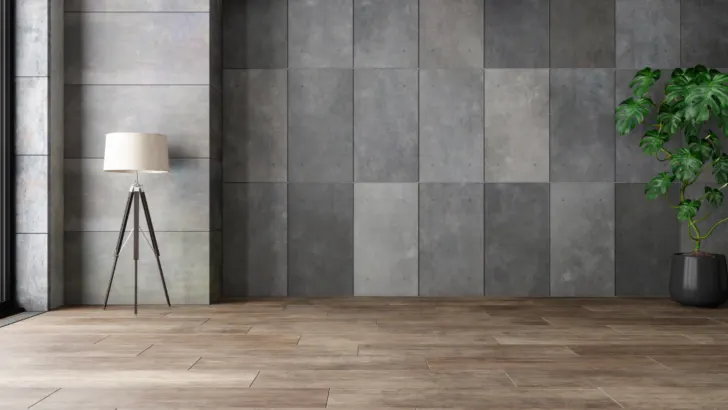
Elevate Your Space with Flagstone Elegance.
Flagstone flooring is a popular choice for a variety of different spaces around the house. In indoor living areas such as living rooms, kitchens, and entryways, flagstone flooring can add a unique and natural aesthetic that can be both functional and stylish. Its durability and resistance to wear and tear make it an attractive option for high-traffic areas such as hallways and entryways.
Additionally, flagstone is an excellent choice for outdoor spaces such as patios, walkways, and pool areas due to its ability to withstand exposure to the elements. Its natural texture and slip-resistant properties also make it a safer option for outdoor spaces.
The versatility of flagstone allows it to be used in a variety of different design styles, from rustic and traditional to modern and contemporary. Overall, the popularity of flagstone flooring around the house can be attributed to its natural beauty, durability, and versatility, making it a desirable choice for many homeowners and designers.
Whilst we explore the reasons why you should invest in flagstone flooring around the house, why not take a read on our blog around Herringbone Laminate Flooring and Grey Herringbone Floor for your next house makeover project?
What is Flagstone Flooring?
Flagstone flooring refers to a type of natural stone flooring made from sedimentary rock, typically sandstone, limestone, or slate. These stones are quarried and then cut into flat, irregularly shaped pieces that are used to create a unique and rustic flooring surface.
The stones can vary in size and thickness, and their natural color and texture can give each piece a distinct appearance. They are typically installed by laying the stones side by side in a pattern that complements the overall design of the space.
Flagstone flooring is commonly used in outdoor spaces such as patios, walkways, and pool areas, but it can also be used indoors in areas such as entryways, kitchens, and bathrooms. It is known for its durability and resistance to heavy foot traffic, making it a popular choice for high-traffic areas. Additionally, it is relatively low maintenance, requiring only occasional sweeping or mopping to keep it clean and looking its best.
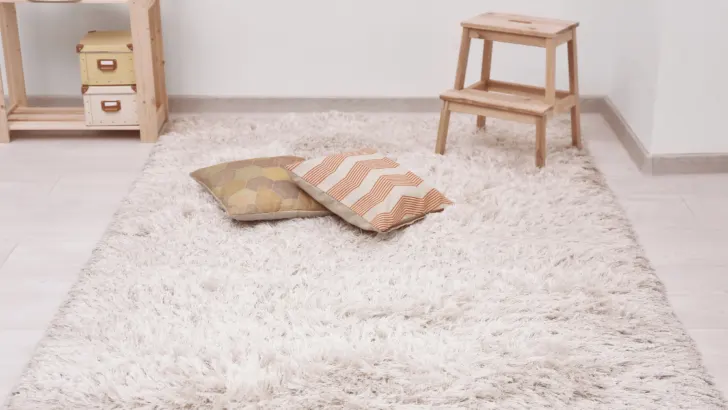
Flagstone Flooring Where Natural Beauty Meets Durability.
What are the Pros and Cons of Flagstone Flooring?
Flagstone flooring is a natural stone flooring option that has a unique appearance and many benefits and drawbacks. Here are some of the pros and cons of using flagstone flooring:
Pros:
- Durability: Flagstone is a durable and long-lasting material that can withstand heavy foot traffic, spills, and other wear and tear. It’s also resistant to scratches and chips.
- Natural Appearance: Flagstone has a unique, natural appearance that can add character and charm to any space. Each piece of stone has its texture, color, and pattern, making it a truly one-of-a-kind flooring option.
- Versatility: Flagstone flooring can be used in a variety of different spaces, from indoor living areas to outdoor patios and walkways.
- Easy Maintenance: Flagstone is relatively easy to maintain, and regular sweeping, vacuuming, and mopping can help keep it looking clean and new. Additionally, flagstone can be sealed to help protect the surface from moisture damage and staining.
Cons:
- Porosity: Flagstone is a porous material, which means that it can absorb liquids and stains more easily than other types of flooring. This can make it less suitable for areas where spills and moisture are common, such as bathrooms and kitchens.
- Slipperiness: Flagstone can be somewhat slippery when wet, making it a less-than-ideal choice for areas where spills or moisture may be present, such as bathrooms or entryways.
- Expense: Flagstone flooring can be more expensive than other types of flooring options, such as vinyl or laminate.
- Installation: Flagstone flooring can be difficult to install, and it may require professional installation to ensure that it’s done correctly.
Overall, flagstone flooring can be a beautiful and durable choice for a variety of different spaces, but it’s important to consider the unique characteristics of the stone and how they may affect its use and maintenance in different areas.
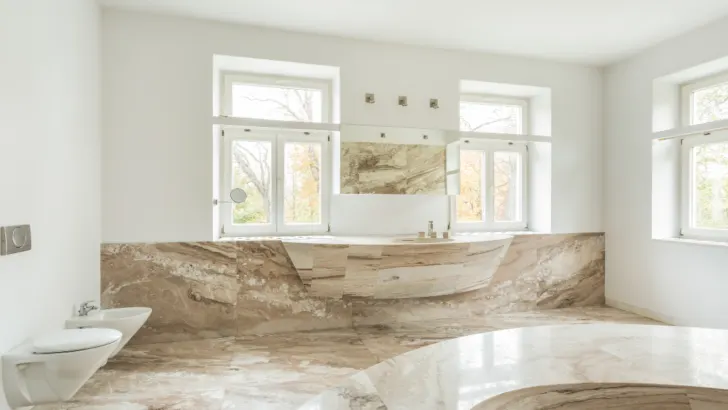
Walk on a Work of Art with Flagstone Flooring.
Is Flagstone Flooring durable?
Yes, flagstone flooring is generally considered to be a durable and long-lasting flooring option. Flagstone is a type of natural stone that is formed over millions of years through sedimentary processes. This gives it a unique composition and texture that can withstand heavy foot traffic, extreme temperatures, and other wear and tear.
Flagstone flooring is also known for its resistance to scratches, chips, and other forms of damage, which makes it a good choice for high-traffic areas such as entryways, kitchens, and outdoor spaces. However, like any natural stone material, flagstone can be susceptible to damage from acidic substances such as vinegar or lemon juice, so it’s important to clean up spills promptly and avoid using harsh chemicals or abrasive cleaning tools.
To ensure the durability of your flagstone flooring, it’s important to properly maintain it over time. This can include regular cleaning, sealing, and resealing as needed to protect the surface and prevent staining and moisture damage. With proper care and maintenance, flagstone flooring can last for many years and even decades, making it a worthwhile investment for your home.

Flagstone Floors Nature’s Masterpiece in Your Home.
Does Flagstone Flooring feel cold?
Flagstone flooring can feel cool to the touch, especially in colder climates or during the winter months. This is because natural stone materials like flagstone have a low thermal conductivity, which means they do not retain heat very well. This can cause the surface of the stone to feel cold to bare feet, even if the room temperature is warm.
However, the actual temperature of the stone can depend on various factors such as the ambient temperature, humidity, and amount of sunlight that the room receives. In addition, the thickness of the stone, the installation method, and the presence of a subfloor or underlayment can also affect how cold the flooring feels.
To help mitigate the coolness of flagstone flooring, some homeowners choose to install radiant floor heating systems, which can provide a consistent source of warmth from beneath the surface. Additionally, using area rugs or mats in high-traffic areas or in areas where you may spend a lot of time standing, such as the kitchen or bathroom, can help to provide additional warmth and comfort underfoot.
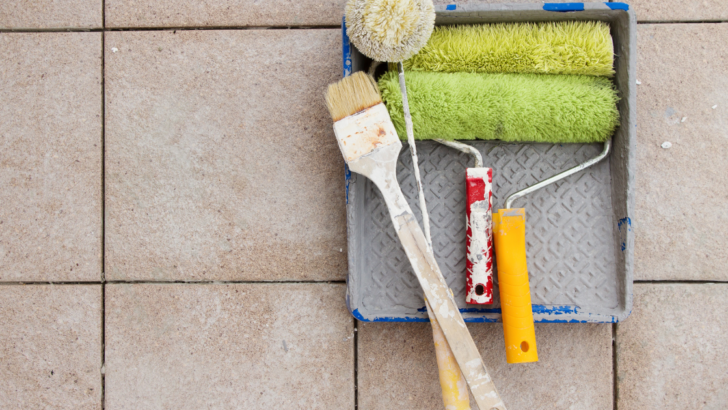
Flagstone Flooring: Keeping Your Floor In Pristine Condition!
How to restore Flagstone Flooring?
Over time, flagstone flooring can become worn or damaged, but with the right techniques, it is possible to restore it to its former beauty. Here are the steps to follow to restore flagstone flooring:
- Clean the surface: Begin by thoroughly cleaning the surface of the flagstone flooring. Use a mild detergent mixed with warm water to remove any dirt, grime, or stains that have accumulated over time. You can use a scrub brush or a pressure washer to help loosen and remove any stubborn dirt or stains.
- Repair any damage: Inspect the flagstone flooring for any cracks, chips, or other damage. If you find any, use a patching compound or epoxy resin to fill in the damaged areas. Allow the compound to dry completely before moving on to the next step.
- Resurface the flooring: To restore the surface of flagstone flooring, you may need to grind or sand it down to remove any scratches, stains, or other imperfections. Use a diamond grinding pad or sandpaper to smooth out the surface of the flagstone. This step may take some time, but it is essential to achieve a smooth, even surface.
- Seal the flagstone: Once the flagstone flooring has been resurfaced, apply a sealant to protect it from future damage. There are many different types of sealers available, so be sure to choose one that is appropriate for your specific type of flagstone flooring. Follow the manufacturer’s instructions carefully for the best results.
Overall, restoring flagstone flooring can be a time-consuming process, but it is well worth the effort to preserve the natural beauty and durability of this unique flooring material.
Where to buy Flagstone Flooring?
There are various options for buying flagstone flooring. Here are some places where you can find flagstone flooring:
-
Stone Suppliers: For a wide range of flagstone flooring options, turn to our trusted stone suppliers. They specialize in natural stone, including flagstone, offering diverse choices in color, size, and texture. Count on their expertise to guide you to the perfect flagstone for your unique project.
-
Home Improvement Stores: Conveniently find flagstone flooring at major home improvement retailers like The Home Depot, Lowe’s, and Menards. While their selections may be more streamlined compared to specialty suppliers, these stores are your one-stop shop for all your home improvement needs.
-
Online Retailers: Explore an extensive array of natural stone flooring, including flagstone, with our online retailers. They provide a broad spectrum of choices and the convenience of shopping from the comfort of your home. Plus, competitive prices and delivery options are often available.
-
Reclaimed Stone Yards: Seeking a rustic or distinctive appearance? Consider a visit to a reclaimed stone yard. These unique suppliers offer salvaged flagstone flooring sourced from historic buildings and other origins, infusing character and charm into your space.
Overall, there are many options for purchasing flagstone flooring, and it’s important to do your research and choose a reputable supplier who can provide quality products and good customer service.

Flagstone Where Classic Meets Contemporary.
How much does Flagstone Flooring cost?
The cost of flagstone flooring can vary widely depending on various factors such as the type of stone, size of the stones, thickness, pattern, installation, and location. Here is a breakdown of the various factors that can influence the cost of flagstone flooring:
- Type of stone: Different types of flagstone have different prices. For example, sandstone and limestone are generally less expensive than slate.
- Size of the stones: Larger flagstone flooring stones generally cost more than smaller stones because they require more labor to install and may be heavier and more difficult to handle.
- Thickness: Thicker flagstone flooring stones are generally more expensive because they are more durable and can withstand heavy foot traffic.
- Pattern: Certain patterns, such as herringbone or basketweave, may require more time and effort to install, which can increase the cost of installation.
- Installation: The cost of installation for flagstone flooring can vary depending on the complexity of the job, the experience of the installer, and the location.
- Location: The cost of flagstone flooring can also vary depending on your location, as shipping costs, taxes, and other fees may be different in different regions.
Overall, the cost of flagstone flooring can range from around $20 to $100 per square meter or more, depending on the factors listed above. It’s important to get quotes from multiple suppliers and installers to get an accurate estimate for your specific project.

Unearth the Beauty of Flagstone for Your Floors.
Can you paint Flagstone Flooring?
While it is technically possible to paint flagstone flooring, it is generally not recommended. Flagstone is a natural stone material that has a unique, textured surface and natural color variations that add to its beauty and character. Painting over flagstone flooring can mask these natural qualities and detract from the overall look and feel of the flooring.
In addition, flagstone flooring is a porous material that absorbs moisture, and paint can potentially trap moisture beneath the surface, causing the stone to deteriorate over time. Furthermore, the paint can also become scratched or chipped with normal wear and tear, and it may be difficult to touch up or repair these areas without repainting the entire surface.
If you are looking to change the color or appearance of your flagstone flooring, consider using a stone stain or dye designed specifically for natural stone materials. These products can enhance the natural color of the stone without completely covering it up, and they are designed to penetrate the pores of the stone, rather than sitting on the surface like paint.
However, before attempting to apply any type of coloring or stain to your flagstone flooring, it is recommended to consult with a professional who can advise you on the best approach and products for your specific type of stone.

Discover the Allure of Flagstone Underfoot.
How to install Flagstone Flooring?
Installing flagstone flooring can be a complex and labor-intensive process, and it’s important to have the proper tools and expertise to ensure that the installation is done correctly. Here is a general overview of the steps involved in installing flagstone flooring:
- Prepare the subfloor: Before installing flagstone flooring, it’s important to ensure that the subfloor is level, clean, and free of debris. If necessary, you may need to install a concrete subfloor or lay down a layer of mortar to provide a smooth, even surface.
- Lay out the stones: Once the subfloor is prepared, you can begin laying out flagstone flooring in the desired pattern. It’s important to choose stones that are of a similar thickness and size, and to ensure that the joints between the stones are consistent and even.
- Cut the stones: Depending on the layout and shape of the space, you may need to cut some of the stones to fit around corners or other obstacles. This can be done using a diamond-bladed saw or chisel and hammer.
- Set the stones: Once the stones are laid out and cut to size, you can begin setting them into place. This is typically done using a layer of mortar or other adhesive material, which is spread onto the subfloor and then combed with a notched trowel to create a consistent thickness.
- Grout the joints: After the stones are set in place, you can fill in the joints between the stones with grout or mortar. This helps to provide stability and prevent shifting or movement of the stones over time.
- Seal the surface: Finally, it’s important to seal the surface of the flagstone flooring with a stone sealer, which helps to protect the surface from staining and moisture damage.
Keep in mind that this is a general overview of the steps involved in installing flagstone flooring, and the actual process may vary depending on the specific type of stone, the layout of the space, and other factors. It’s important to work with a professional installer who has experience with natural stone materials and can provide guidance and expertise throughout the installation process.
Can you have Flagstone Flooring in the kitchen?
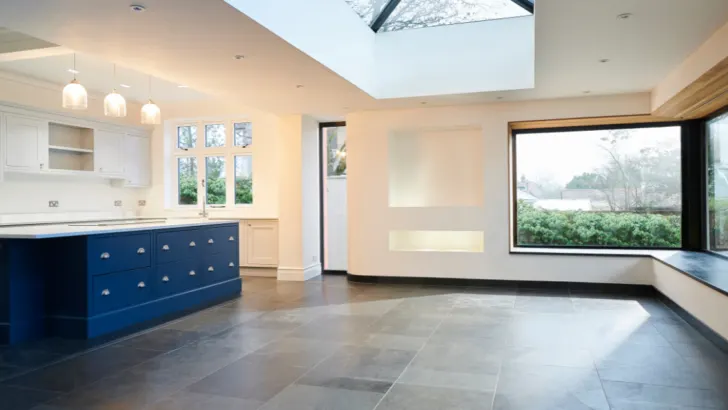
Flagstone Flooring Transforming Spaces, One Stone at a Time.
Yes, flagstone flooring can be a great choice for a kitchen. Flagstone is a durable and natural material that can withstand heavy foot traffic, spills, and other wear and tear that can occur in a kitchen. It also has a unique and natural appearance that can add character and charm to the space.
However, it’s important to keep in mind that flagstone flooring can be porous, which means that it may be more susceptible to staining and damage from acidic substances such as vinegar or citrus juice. To help protect the surface of the stone, it’s important to seal the stone regularly with a high-quality stone sealer, which can help prevent staining and moisture damage.
It’s also important to consider the comfort and safety of the flooring surface in the kitchen. Flagstone flooring can feel cool to the touch, especially in colder climates, so you may want to consider adding area rugs or mats in high-traffic areas or in areas where you may spend a lot of time standing, such as in front of the sink or stove. Additionally, flagstone flooring can be somewhat slippery when wet, so it’s important to take precautions to prevent slips and falls, such as using slip-resistant rugs or mats in areas where water may be present.
Overall, flagstone flooring can be a beautiful and durable choice for a kitchen, but it’s important to consider the unique characteristics of the stone and take steps to protect and maintain the surface over time.

Flagstone Flooring Craftsmanship That Lasts Generations.
Can you have Flagstone Flooring anywhere around the house?
Flagstone flooring can be used in a variety of different spaces throughout the home, from living rooms and kitchens to outdoor patios and walkways. However, it’s important to consider the unique characteristics of flagstone and how they may affect the installation and use of the flooring in different areas.
Here are a few factors to consider when deciding where to install flagstone flooring:
- Durability: Flagstone is a durable and long-lasting material that can withstand heavy foot traffic, spills, and other wear and tear. This makes it a good choice for high-traffic areas such as entryways, living rooms, and kitchens.
- Porosity: Flagstone flooring is a porous material, which means that it can absorb liquids and stains more easily than other types of flooring. This makes it less suitable for areas where spills and moisture are common, such as bathrooms and laundry rooms. However, by sealing the stone regularly with a high-quality stone sealer, you can help to protect the surface from moisture damage and staining.
- Comfort: Flagstone flooring can feel cool to the touch, especially in colder climates or during the winter months. This may make it less suitable for areas where you may spend a lot of time standing or walking barefoot, such as bedrooms or bathrooms. However, by using area rugs or mats, you can help to provide additional warmth and comfort underfoot.
- Style: Flagstone flooring has a unique and natural appearance that can add character and charm to any space. However, it may be more suitable for certain design styles, such as rustic or traditional, than for modern or contemporary styles.
Overall, flagstone flooring can be a versatile and attractive choice for a variety of different spaces throughout the home, but it’s important to consider the unique characteristics of the stone and how they may affect its use and maintenance in different areas.
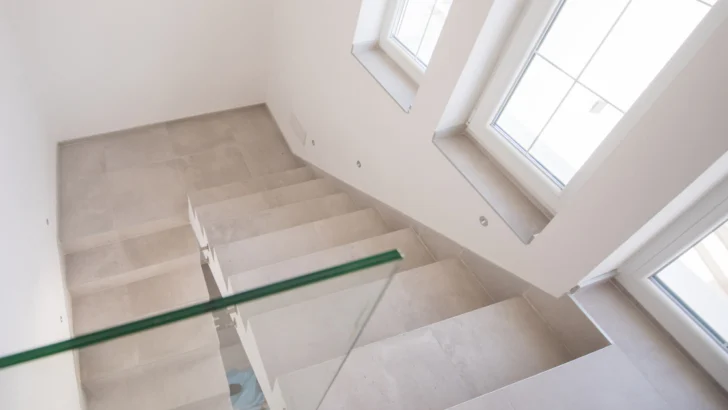
Flagstone Where Style and Resilience Converge.
How to clean Flagstone Flooring?
Flagstone flooring is a natural stone that requires some specific care and maintenance to keep it looking its best. Here are some steps to follow to clean flagstone flooring:
- Sweep or vacuum: Begin by sweeping or vacuuming the floor to remove any loose dirt or debris. This will prevent scratching of the st1one during the cleaning process.
- Mop: Using a mop, apply a pH-neutral stone cleaner or a solution of warm water and mild detergent. Avoid using harsh chemicals or acidic cleaners, which can damage the stone. If you’re unsure about what cleaner to use, check with the manufacturer or a professional stone cleaner.
- Scrub: For any stubborn spots or stains, use a soft-bristled brush or a scrub pad to gently scrub the area. Be sure to rinse the area thoroughly with clean water afterward to remove any residue.
- Rinse: After cleaning, rinse the floor thoroughly with clean water to remove any remaining soap or cleaner.
- Dry: Wipe up any excess water with a soft towel or mop, and allow the floor to air dry completely before walking on it.
- Seal: Depending on the type of flagstone flooring and the amount of foot traffic it receives, it may be necessary to seal the stone periodically to help protect it from moisture damage and staining. Check with the manufacturer or a professional stone cleaner for recommendations on how often to seal your specific type of flagstone.
Overall, regular cleaning and maintenance can help keep your flagstone flooring looking beautiful and new for years to come. Be sure to follow the manufacturer’s recommendations for cleaning and maintenance, and avoid using harsh chemicals or abrasive cleaners that can damage the stone.

Elevate Your Living Space with Flagstone Flooring.
What is the takeaway opinion of experts and interior designers for Flagstone Flooring?
Experts and interior designers generally have a positive opinion of flagstone flooring, but they also acknowledge that it may not be the best choice for every space or every homeowner. Here are some common takeaways from experts and designers regarding flagstone flooring:
- Unique Appearance: Flagstone flooring has a unique and natural appearance that can add character and charm to any space. Each piece of stone has its texture, color, and pattern, making it a truly one-of-a-kind flooring option.
- Durability: Flagstone flooring is a durable and long-lasting material that can withstand heavy foot traffic, spills, and other wear and tear. It’s also resistant to scratches and chips.
- Versatility: Flagstone flooring can be used in a variety of different spaces, from indoor living areas to outdoor patios and walkways.
- Maintenance: While flagstone flooring is relatively easy to maintain, it does require some 1specific care and attention to keep it looking its best. This may include regular cleaning, sealing, and occasional polishing.
- Cost: Flagstone flooring can be more expensive than other types of flooring options, such as vinyl or laminate. However, experts and designers often note that the unique appearance and durability of flagstone may make it a worthwhile investment for some homeowners.
Overall, experts and interior designers tend to view flagstone flooring as a beautiful and durable option for a variety of different spaces, but they also recommend that homeowners consider the unique characteristics of the stone and how they may affect its use and maintenance in different areas.
If you’re looking for more inspiration for your home improvement projects, be sure to check out our home improvement blog. We offer a wide range of articles on various topics such as Grey Kitchen Tiles in kitchen remodels, Green Bathroom Tiles in bathroom renovations, and outdoor living spaces. Our team of experts provides detailed information and tutorials on how to achieve the look you want, whether it’s a modern, traditional, or rustic style. Additionally, we also provide tips and tricks to help you save money, time, and energy during your renovation projects. So don’t hesitate, to visit our blog and start planning your next home improvement project today!
I hope this helps! Let me know if you have any other questions about Flagstone Flooring in the comments section below.
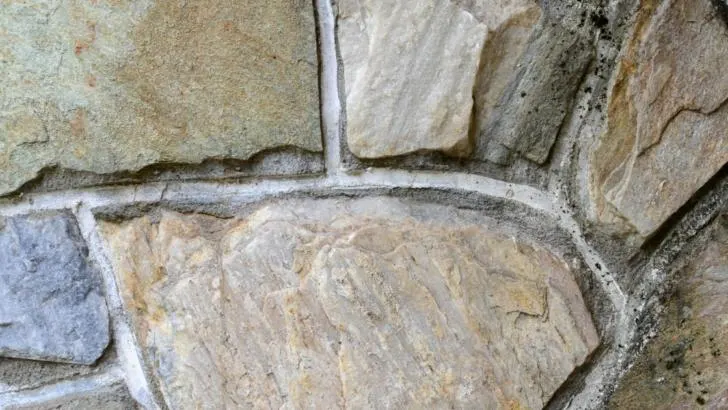
Flagstone Elegance for Every Room in Your Home.
